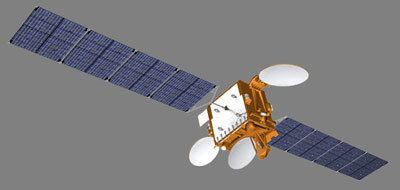COSPAR ID 2003-053B Launch mass 1,351 kg Launch date 24 November 2003 | SATCAT no. 28094 Spacecraft type Yamal 200 Mission duration 11 years Bus USP | |
 | ||
Manufacturers S. P. Korolev Rocket and Space Corporation Energia (bus), Thales Alenia Space (payload) Similar Yamal‑300K, Yamal 202, Ekspress AM22, Yamal‑401, Intelsat 15 | ||
Yamal 201 at 90 0 e
Yamal 201 (Russian: Ямал-201) was a geostationary communications satellite operated by Gazkom and built by RSC Energia. It was, along with Yamal 202 the second dual launch of the Yamal program and the second iteration of the USP Bus. It was a 1,351 kg (2,978 lb) satellite with 4,080W of power (3.4 kW at end of life) on an unpressurized bus. It had eight SPT-70 electric thrusters by OKB Fakel for station keeping. Its payload was 9 C band and 6 Ku band transponders supplied by Space Systems Loral.
Contents
Dxsatcs com 11 093 v ren tv 7 yamal 201 at 90 0 e
History
During 1997, even before the launch of their first satellites (Yamal 101 and Yamal 102), Gazkom was planning the second generation. At that time they planned a 24 satellites of the second generation. This extremely aggressive plan was scaled back by 2001 with a plan to launch four 200 series satellites. The first two, Yamal 201 and Yamal 202 would be launched by 2001 and the second pair, Yamal 203 and Yamal 204 by 2004. Yamal 201 and Yamal 203 would be identical and be positioned at the 90°E slot and Yamal 202 and Yamal 204 would also be twins and be positioned at the 49°E slot.
Yamal 201 was launched along Yamal 202 November 24, 2003 at 16:2 UTC from Baikonur Site 81/23 by a Proton-K/Blok-DM-2M directly to GEO. The launch and satellite deployment was successful and Yamal 201 was commissioned into service. On June 5, 2014 Yamal 201 failed and the clients had to be moved to other satellites of the network. The satellite lasted 3846 days (10 years 6.5 months), short of the design life of 12.5 years.
